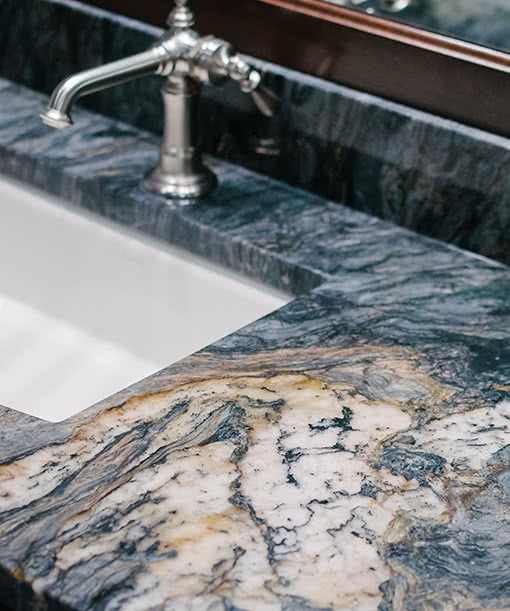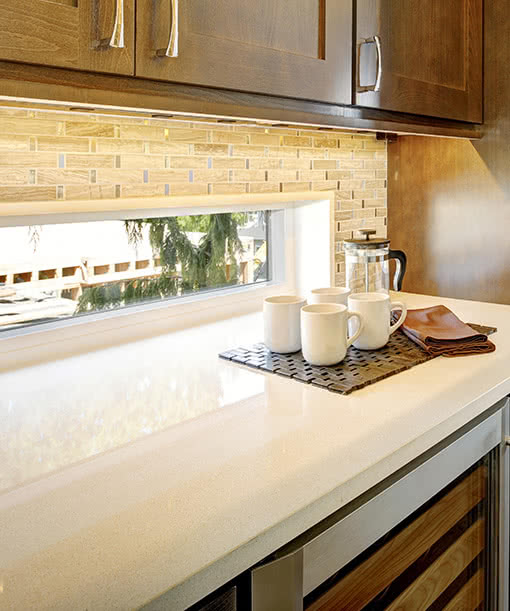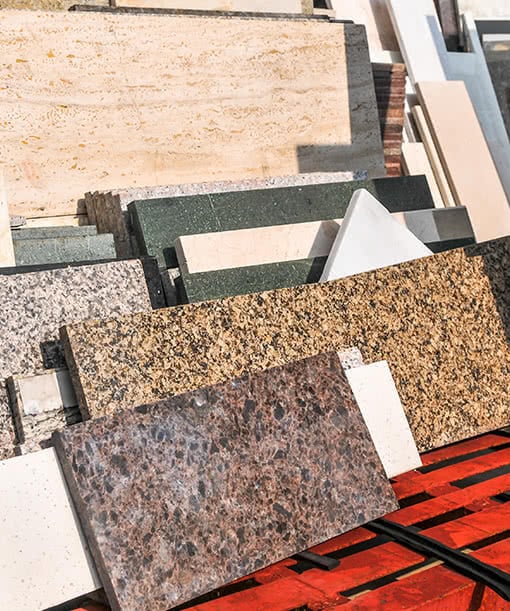Countertop Buying Guide
Hammering out the final details of your new kitchen or bathroom? You may not know the best option for your unique situation. Explore the buying guide below to see which countertop option may be best for you!
Granite is the gold standard for quality countertops, but quartz is quickly overtaking granite as the go to countertop material. But which one is the better material? That really depends on what you’re looking for. Before you start buying materials, it’s important to know the difference between granite and quartz so you can make an educated and correct decision.
Granite
Pros
- Has a great, natural look
- Sturdy, strong, and reliable
- Can be a permanent fixture
- Can be bought in massive slabs
- Fewer seams than other materials
- Cheaper than Quartz
- Raises the value of your home
Cons
- Granite is porous
- It requires some maintenance
- Patterns can get very busy in appearance
- Can be difficult to find the perfect pattern to match your style
- Granite is permanent. Pick a pattern you will like for decades.

Quartz
Pros
- Quartz is very low maintenance
- Much stronger than natural stone
- Raises the value of your home
- Consistent clean styles
- Stands up to spills, hot pans, knives and heavy hits
- Looks great in modern kitchens and bathrooms
- Raises the value of your home
Cons
- Can be expensive
- Slabs of the same color will always look the same
- Quartz is manufactured and is not considered natural stone
- Patterns can be too simple and considered boring
- In high demand

Remnants
Remnants are smaller pieces of natural and engineered stone. These small pieces are the leftovers of full slabs that have been cut down to custom sizes and shapes. Remnants can save you both time and money on renovations. There are several factors that go into deciding if remnants are right for your project.
Pros
- Significantly cheaper than full slabs
- Great for small areas
- Wide selection of designs and colors
Cons
- Creates more seams
- Won’t typically work for a large area
- Hard to create a consistent pattern

